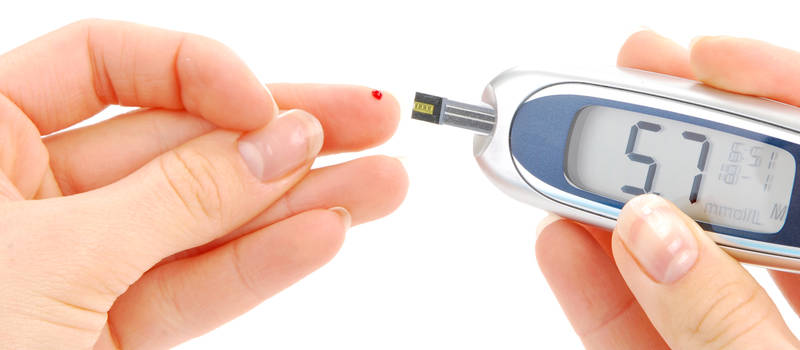Diabetes is one of the most common health conditions affecting millions of people in India today. Among its many complications, Diabetic Foot Ulcer (DFU) is one of the most serious and often neglected problems. Even a small wound or blister on the foot can turn into a severe infection if not treated promptly. For diabetic patients, proper awareness and timely surgical management are essential to prevent major complications such as gangrene or amputation.
In this blog, Dr. Dhananjay Patil, General Surgeon at Chetna Hospital, Chinchwad, explains the causes, symptoms, and surgical management of diabetic foot ulcers, along with preventive care and recovery tips.
What is a Diabetic Foot Ulcer?
A diabetic foot ulcer is an open sore or wound that occurs in approximately 15% of patients with diabetes. It usually appears on the bottom of the foot or near pressure areas like toes and heels. Due to prolonged high blood sugar levels, patients with diabetes suffer from two major complications:
- Peripheral Neuropathy (Nerve Damage):
Loss of sensation in the feet means patients may not feel pain, cuts, or blisters. - Peripheral Vascular Disease (Poor Blood Flow):
Reduced circulation slows healing and increases the risk of infection.
Because of these factors, even a minor injury can progress rapidly into an infected ulcer if ignored.
Common Causes of Diabetic Foot Ulcer
- Poor blood circulation due to vascular disease
- Nerve damage that leads to loss of sensation
- Ill-fitting footwear causing blisters and pressure sores
- Poor foot hygiene and neglected wounds
- Uncontrolled blood sugar leading to delayed wound healing
- Infections that spread quickly in diabetic patients
Symptoms You Shouldn’t Ignore
Diabetic foot ulcers may start small but can worsen silently. Warning signs include:
- Persistent non-healing wound on the foot
- Swelling, redness, or warmth around the wound
- Foul-smelling discharge or pus
- Black or dark tissue (sign of gangrene)
- Pain or numbness in the foot
- Fever or fatigue due to infection spread
If any of these symptoms are noticed, consult a General Surgeon or Diabetic Foot Specialist immediately.
Diagnosis and Evaluation
Before starting treatment, the surgeon evaluates the severity of the ulcer. At Chetna Hospital, the diagnostic process typically includes:
- Clinical Examination: Inspection of wound depth, infection, and tissue loss.
- Blood Tests: To check sugar control, infection levels, and healing capacity.
- Wound Swab Culture: To identify bacterial infection and select proper antibiotics.
- Doppler Study / Angiography: To assess blood circulation in the affected limb.
- X-ray or MRI (if required): To detect bone infection (osteomyelitis).
This comprehensive assessment helps determine whether conservative or surgical management is required.
Surgical Management of Diabetic Foot Ulcer
Surgery is often the most effective and life-saving approach when the ulcer is deep, infected, or non-healing despite conservative treatment. The main goals of surgery are:
- Remove dead or infected tissue
- Control infection
- Promote healthy wound healing
- Prevent recurrence or amputation
Here are the key surgical techniques used:
1. Debridement
Debridement is the most common and essential surgical step. The surgeon removes all dead, damaged, or infected tissue from the wound. This helps stimulate new tissue growth and reduces bacterial load. Depending on the condition, debridement may need to be repeated periodically until the wound shows healthy granulation tissue.
2. Drainage of Abscess or Pus Collection
If the infection has formed an abscess, the surgeon performs incision and drainage to release the pus, clean the wound cavity, and apply sterile dressing. This prevents the infection from spreading to deeper tissues.
3. Skin Grafting or Flap Surgery
In cases where large areas of skin are lost, skin grafting or local flap surgery may be performed to cover the wound. These procedures accelerate healing, protect underlying tissues, and restore normal appearance.
4. Revascularization (Improving Blood Flow)
If poor circulation is the main reason for non-healing, vascular or bypass surgery may be recommended. This procedure helps restore blood supply to the affected limb, improving healing and reducing the risk of amputation.
5. Amputation (Only in Advanced Cases)
In rare and advanced cases where infection has spread extensively or gangrene has set in, partial or complete amputation may become necessary to save the patient’s life. With modern surgical techniques, such extreme measures are avoided through early detection and timely intervention.
Post-Surgical Care and Recovery
Proper post-surgery care is crucial for faster recovery and preventing recurrence.
1. Wound Care and Dressing:
Regular dressing changes are done under sterile conditions. The wound must be kept clean and dry.
2. Blood Sugar Control:
Strict glucose management through medication, diet, and exercise ensures proper healing.
3. Infection Control:
Appropriate antibiotics are prescribed based on culture reports.
4. Pressure Relief:
Special diabetic footwear or off-loading devices are used to prevent pressure on the healing wound.
5. Regular Follow-Up:
Continuous monitoring helps detect early signs of infection or delayed healing.
6. Nutrition Support:
A balanced diet rich in protein, vitamin C, and zinc promotes tissue repair and faster recovery.
Prevention of Diabetic Foot Ulcers
Prevention is always better than cure, especially for diabetic patients. Here are simple preventive measures recommended by Dr. Dhananjay Patil:
- Inspect your feet daily for cuts, cracks, or blisters.
- Wash feet with mild soap and dry properly, especially between toes.
- Avoid walking barefoot, even indoors.
- Wear comfortable, well-fitted shoes and cotton socks.
- Trim nails carefully and avoid self-treatment of corns or calluses.
- Keep blood sugar levels under control.
- Schedule regular foot check-ups with your doctor.
Why Choose Chetna Hospital, Chinchwad for Diabetic Foot Care?
At Chetna Hospital, we offer a comprehensive approach to diabetic foot management — combining advanced diagnostic tools, modern surgical techniques, and personalized post-operative care.
Under the expertise of Dr. Dhananjay Patil, our surgical team ensures:
- Timely diagnosis and precise treatment
- Minimally invasive and tissue-sparing surgical methods
- Emphasis on limb preservation and rehabilitation
- Patient education for long-term foot care
Our goal is not only to heal the wound but also to restore mobility, prevent recurrence, and improve quality of life for every diabetic patient.
Final Thoughts
A Diabetic Foot Ulcer is not just a skin wound — it’s a serious warning sign of underlying vascular and nerve damage. Delay in treatment can lead to severe infection, gangrene, and even limb loss. But with early medical attention and surgical management, complete healing is possible.
If you notice any non-healing wound, redness, or discharge on your foot, don’t wait. Visit Dr. Dhananjay Patil, General Surgeon at Chetna Hospital, Chinchwad, for prompt diagnosis and expert care.













